
Filter News
Area of Research
- Advanced Manufacturing (1)
- Biology and Environment (12)
- Computer Science (2)
- Energy Frontier Research Centers (1)
- Energy Science (41)
- Fusion and Fission (5)
- Fusion Energy (6)
- Isotope Development and Production (1)
- Materials (50)
- Materials for Computing (3)
- National Security (8)
- Neutron Science (15)
- Nuclear Science and Technology (20)
- Nuclear Systems Modeling, Simulation and Validation (1)
- Quantum information Science (3)
- Sensors and Controls (1)
- Supercomputing (38)
News Topics
- (-) Advanced Reactors (15)
- (-) Composites (4)
- (-) Computer Science (53)
- (-) Fusion (18)
- (-) Grid (10)
- (-) Machine Learning (8)
- (-) Materials Science (49)
- (-) Nanotechnology (26)
- (-) Quantum Science (17)
- (-) Security (10)
- (-) Space Exploration (6)
- 3-D Printing/Advanced Manufacturing (34)
- Artificial Intelligence (9)
- Big Data (12)
- Bioenergy (15)
- Biology (6)
- Biomedical (27)
- Biotechnology (2)
- Buildings (1)
- Chemical Sciences (5)
- Clean Water (3)
- Coronavirus (25)
- Critical Materials (4)
- Cybersecurity (7)
- Energy Storage (23)
- Environment (32)
- Exascale Computing (3)
- Frontier (1)
- High-Performance Computing (3)
- Isotopes (14)
- Materials (2)
- Mathematics (2)
- Mercury (2)
- Microscopy (13)
- Molten Salt (6)
- National Security (2)
- Neutron Science (45)
- Nuclear Energy (44)
- Physics (22)
- Polymers (12)
- Summit (19)
- Transportation (22)
Media Contacts
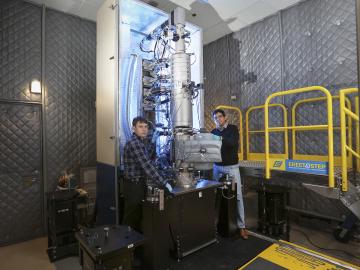
A scientific team led by the Department of Energy’s Oak Ridge National Laboratory has found a new way to take the local temperature of a material from an area about a billionth of a meter wide, or approximately 100,000 times thinner than a human hair. This discove...

Last November a team of students and educators from Robertsville Middle School in Oak Ridge and scientists from Oak Ridge National Laboratory submitted a proposal to NASA for their Cube Satellite Launch Initiative in hopes of sending a student-designed nanosatellite named RamSat into...
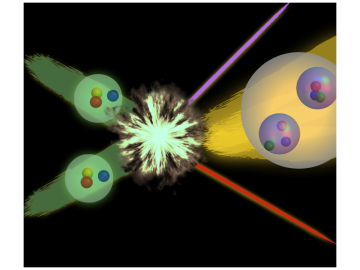
Nuclear physicists are using the nation’s most powerful supercomputer, Titan, at the Oak Ridge Leadership Computing Facility to study particle interactions important to energy production in the Sun and stars and to propel the search for new physics discoveries Direct calculatio...

A novel method developed at Oak Ridge National Laboratory creates supertough renewable plastic with improved manufacturability. Working with polylactic acid, a biobased plastic often used in packaging, textiles, biomedical implants and 3D printing, the research team added tiny amo...
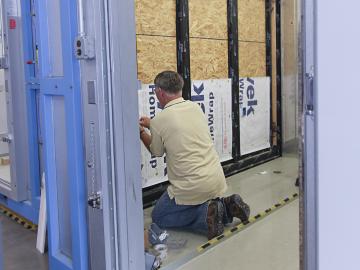
A new system being developed at Oak Ridge National Laboratory will help builders and home designers select the best construction materials for long-term moisture durability. “It has become challenging to make informed decisions because of modern building code requirements and new ...
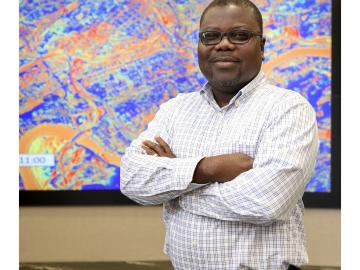
At the Department of Energy’s Oak Ridge National Laboratory, Olufemi “Femi” Omitaomu is leveraging Big Data for urban resilience, helping growing cities support future infrastructure and resource needs. A senior research scientist for ORNL’s Computational Sciences and Engineeri...
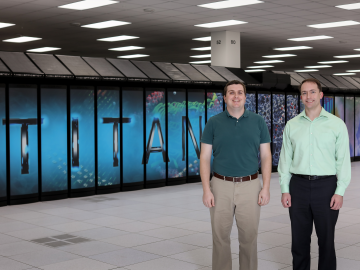
A team of researchers from the Department of Energy’s Oak Ridge National Laboratory has married artificial intelligence and high-performance computing to achieve a peak speed of 20 petaflops in the generation and training of deep learning networks on the

Material surfaces and interfaces may appear flat and void of texture to the naked eye, but a view from the nanoscale reveals an intricate tapestry of atomic patterns that control the reactions between the material and its environment. Electron microscopy allows researchers to probe...

With the production of 50 grams of plutonium-238, researchers at the Department of Energy’s Oak Ridge National Laboratory have restored a U.S. capability dormant for nearly 30 years and set the course to provide power for NASA and other missions.

When it’s up and running, the ITER fusion reactor will be very big and very hot, with more than 800 cubic meters of hydrogen plasma reaching 170 million degrees centigrade. The systems that fuel and control it, on the other hand, will be small and very cold. Pellets of frozen gas will be shot int...


